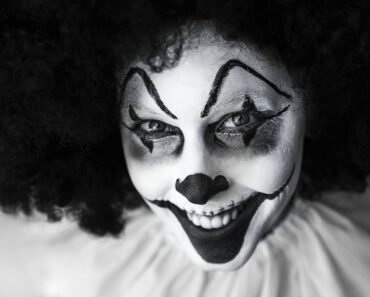Mirrors have been a source of fascination for centuries. From ancient myths about Narcissus to the modern-day thrill of horror movies, mirrors are often associated with mystery, self-reflection, and even a little bit of fear. But what actually happens if you stare into a mirror for too long? You might have heard stories of strange experiences, psychological effects, or even hallucinations. In this article, we’ll explore the science and psychology behind staring into mirrors, what you might experience, and why these effects happen.
The Science Behind Staring Into a Mirror
When you stare into a mirror for an extended period, you are engaging in a behavior that can lead to several interesting psychological phenomena. These effects are often rooted in how our brains process visual information and our understanding of self-perception.
1. The Troxler Effect
One of the primary scientific explanations for what happens when you stare into a mirror is the Troxler Effect. This phenomenon, first discovered by Swiss physician Ignaz Paul Vital Troxler in 1804, occurs when you focus your gaze on a single point for a prolonged period. As a result, surrounding visual stimuli start to fade or disappear from your perception.
How the Troxler Effect Works:
- Visual Adaptation: When you fixate on one point, such as your reflection, your brain starts to adapt to the unchanging stimulus.
- Peripheral Fading: The brain essentially “tunes out” information that isn’t changing, causing the surrounding areas of your vision to fade away or distort.
Example:
“If you stare at your reflection for a few minutes, you might notice your face starting to distort or even parts of it seemingly disappearing. This is the Troxler Effect in action, where your brain filters out stable stimuli to focus more on the dynamic parts of your visual field.”
2. Perceptual Distortions and Hallucinations
Prolonged mirror-gazing can lead to perceptual distortions and even mild hallucinations. This is sometimes referred to as the “strange-face illusion.” When you stare into a mirror for a long time, your brain’s facial recognition processes can begin to play tricks on you.
Why This Happens:
- Cognitive Dissonance: Your brain expects a stable image but, due to the Troxler Effect and other factors, starts to see changes that aren’t actually happening. This conflict can cause your brain to fill in gaps with distortions or hallucinations.
- Facial Feature Adaptation: Staring at your face for a long time can cause certain facial features to become less prominent, leading to a “melting” effect or the perception of facial features changing.
Common Experiences:
- Seeing your face appear to warp or change shape.
- Noticing your eyes or mouth seemingly move when they aren’t.
- Perceiving faces other than your own, such as seeing a stranger or a monstrous figure.
3. Dissociation and Self-Identity
Staring at yourself in a mirror for an extended period can also lead to feelings of dissociation. This occurs when your brain starts to disconnect your reflection from your sense of self.
Psychological Effects:
- Depersonalization: You may begin to feel detached from your reflection, almost as if the person staring back isn’t really you.
- Self-Alienation: Extended mirror-gazing can cause a sense of alienation from your own body, leading to an uncanny or eerie feeling.
Example:
“After several minutes of staring into the mirror, you might begin to feel like you’re looking at someone else entirely, or that your reflection has a mind of its own.”
Why Do These Effects Occur?
The effects of staring into a mirror for too long are largely due to the way our brains process and interpret visual information. The brain is constantly trying to make sense of the stimuli it receives, and when faced with an unchanging or repetitive image, it may start to “fill in the blanks” or create distortions to compensate.
1. Brain’s Predictive Nature
Our brains are wired to predict and anticipate changes in our environment. When these changes don’t occur, as in the case of staring at a mirror, the brain might create its own.
- Expectation vs. Reality: The brain expects movement or change and, when it doesn’t happen, might create the illusion of change to reconcile the lack of new information.
2. Psychological Responses to Uncertainty
Humans have a natural discomfort with uncertainty and ambiguity. This discomfort can lead to the brain filling in the gaps with familiar or expected images, even if those images aren’t real.
- Familiarity Effect: Our brains may substitute familiar faces or shapes for parts of our reflection that are distorted or obscured.
- Fight or Flight Response: The eerie feeling of seeing something unexpected in the mirror can trigger a mild fight or flight response, heightening your senses and causing further distortions.
The Cultural and Psychological Significance of Mirrors
Mirrors have long been symbols in various cultures, representing self-reflection, vanity, and even portals to other worlds. This cultural backdrop can influence how we react psychologically to mirror-gazing.
1. Mirrors in Folklore and Mythology
Many cultures have myths and legends about mirrors. For example, in some stories, mirrors are thought to trap souls or reflect one’s true self. These myths can influence our subconscious mind, causing heightened anxiety or fascination with mirrors.
Example:
“The ancient Greeks believed that mirrors could reveal a person’s true soul, while in some Eastern cultures, mirrors are thought to reflect spiritual realms. Such beliefs can amplify our reactions when staring into a mirror for extended periods.”
2. Mirrors in Psychology
Psychologically, mirrors are often used as tools for self-reflection and introspection. They can help people confront their self-image, explore their identities, or even assist in therapeutic settings for body dysmorphia and other disorders.
Therapeutic Uses:
- Self-Awareness: Mirrors can be used in therapy to help individuals become more aware of their body language, facial expressions, and emotions.
- Exposure Therapy: For those with a negative self-image, mirrors can be used in controlled environments to gradually reduce anxiety about one’s appearance.
How to Safely Explore Mirror-Gazing
If you’re curious about what happens when you stare into a mirror for a long time and want to explore this phenomenon yourself, here are some tips to do so safely:
1. Set a Time Limit
Don’t stare into the mirror for too long. Set a timer for a few minutes to avoid becoming too absorbed or experiencing intense hallucinations.
2. Create a Comfortable Environment
Ensure you’re in a comfortable and safe space where you won’t be disturbed. Dim lighting can enhance the effects but also ensure you feel secure.
3. Stay Calm and Relaxed
Maintain a calm mindset. If you start to feel uncomfortable or anxious, take a break. Remember that any strange experiences are simply the result of your brain processing visual information in an unusual way.
4. Reflect Afterwards
Take some time to reflect on your experience. What did you see? How did it make you feel? Understanding your reactions can provide insights into your subconscious mind and how your brain interprets visual stimuli.
5. Avoid Doing This Alone If Anxious
If you have a tendency to feel anxious or are easily frightened, consider doing this with a friend or avoid it altogether. The mind can be a powerful tool, and it’s important to prioritize your mental well-being.
Conclusion
Staring into a mirror for too long can lead to a range of strange and intriguing experiences, from visual distortions to feelings of dissociation. While these effects might seem eerie or unsettling, they are simply the result of the brain’s complex processing mechanisms when faced with unchanging stimuli. By understanding the science and psychology behind these phenomena, you can explore mirror-gazing safely and perhaps even gain a deeper understanding of how your mind works.
Quote:
“Mirrors show us more than just our reflections; they reveal how we perceive ourselves and the world around us.”






